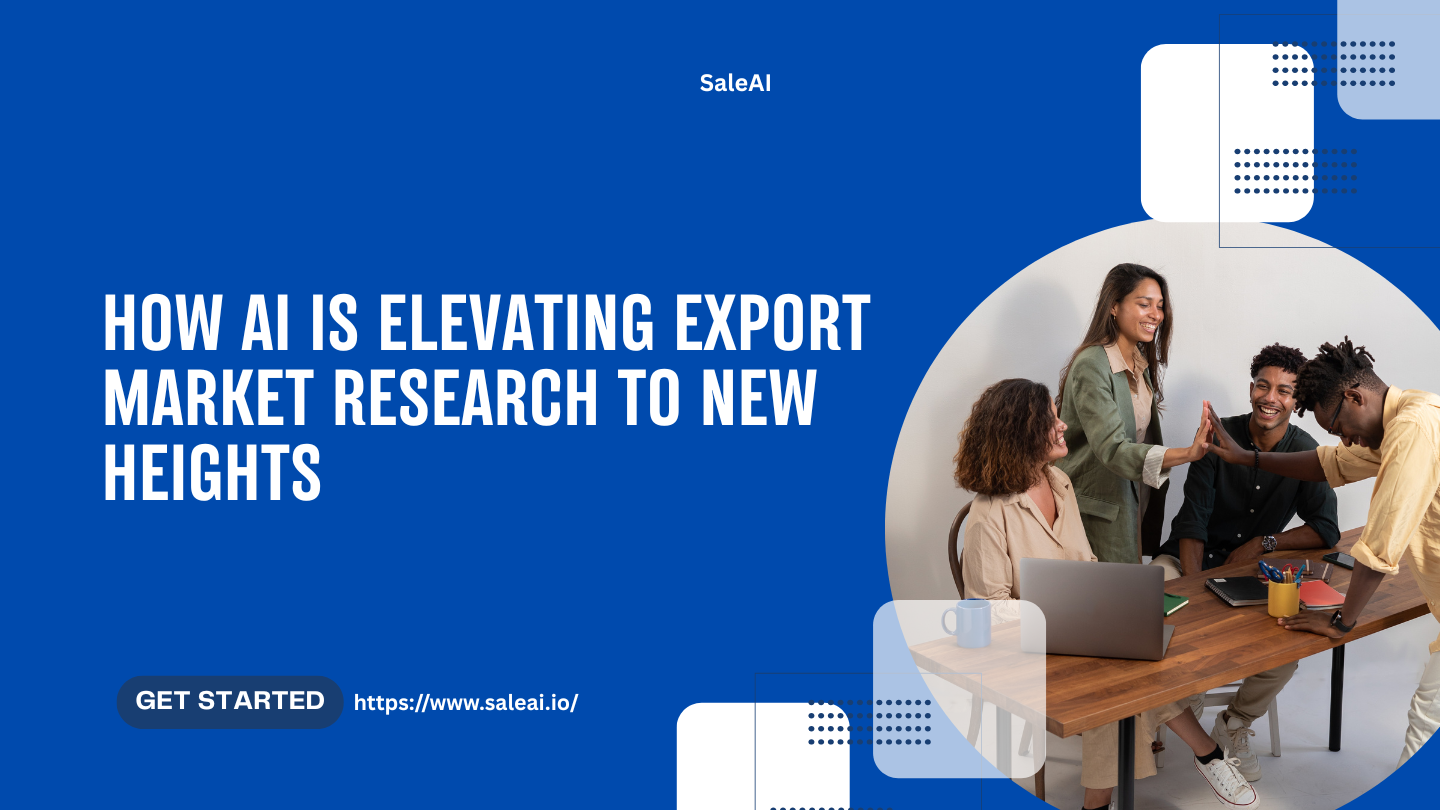Introduction: The Role of Market Research in Exporting
Market research is the cornerstone of any successful export strategy. It helps businesses understand buyer behavior, identify lucrative markets, and assess competitive landscapes. However, traditional market research methods often fall short due to their reliance on manual data collection, fragmented sources, and lengthy turnaround times.
AI is changing the game, making export market research faster, more precise, and more actionable. Instead of spending weeks analyzing data, businesses can now leverage AI tools to uncover insights in real time, enabling quicker decision-making and more agile entry into new markets.
Why Traditional Market Research Methods Are Falling Behind
Exporters face significant challenges when relying on outdated research methods:
- Time-Intensive Processes: Collecting and analyzing data manually takes weeks or months, delaying market entry.
- Inconsistent Data Sources: Exporters often struggle to consolidate information from multiple, disconnected platforms.
- Limited Predictive Capabilities: Traditional methods provide historical insights but fail to predict future trends.
- High Costs: Hiring consultants or conducting primary research can be prohibitively expensive for small and medium-sized businesses.
AI addresses these challenges by automating data collection, analyzing diverse datasets, and delivering actionable insights at a fraction of the time and cost.
The AI Advantage in Export Market Research
a. Real-Time Data Analysis
AI systems can analyze vast amounts of data in real time, from trade reports and buyer activity to social media trends and competitor pricing.
- Example: AI tools like SaleAI monitor global trade databases to identify emerging demand for specific products in new markets.
- Impact: Exporters gain immediate insights into market opportunities, enabling faster and more informed decisions.
💡 Explore More: International Trade Centre: Data for Market Research
b. Identifying Emerging Market Trends
AI uses predictive analytics to identify trends before they become mainstream.
- How It Works: By analyzing historical data, news reports, and buyer behavior, AI forecasts shifts in market demand and consumer preferences.
- Example: Discovering an increasing demand for biodegradable packaging in Southeast Asia, allowing exporters to adapt their product line accordingly.
- Impact: Early identification of trends ensures exporters stay ahead of competitors and capture new opportunities.
💡 Further Reading: OECD: Emerging Markets and Trade
c. Competitor Intelligence
AI tools aggregate and analyze competitor data, offering insights into their pricing, product offerings, and marketing strategies.
- How It Works: AI scrapes public data sources, such as online marketplaces and trade directories, to build a comprehensive view of competitors.
- Impact: Exporters can refine their pricing strategies, identify gaps in the market, and position their products more effectively.
💡 Learn More: Harvard Business Review: Using AI for Competitive Advantage
d. Customized Market Segmentation
AI enables hyper-targeted market segmentation by analyzing buyer demographics, purchasing behavior, and regional trends.
- How It Works: AI tools group buyers into segments based on shared characteristics, such as industry type, order frequency, or price sensitivity.
- Example: An AI tool recommends focusing on high-volume buyers in North America while targeting smaller distributors in Southeast Asia.
- Impact: Exporters can tailor their marketing and sales strategies to address the unique needs of each segment.
💡 Stay Informed: World Bank: Market Segmentation and Export Growth
e. Reducing Research Costs
AI eliminates the need for expensive third-party research firms by automating data collection and analysis.
- How It Works: By integrating with free data sources such as trade databases and economic reports, AI tools provide valuable insights without the high costs.
- Impact: Small and medium-sized exporters gain access to high-quality market research, leveling the playing field against larger competitors.
💡 Related Resource: UNCTAD: Digital Tools for Trade Analysis
How SaleAI Simplifies Export Market Research
SaleAI offers a suite of features designed to transform how exporters conduct market research:
- Global Trade Insights: Harness data from global trade databases to identify market opportunities.
- AI-Driven Trend Analysis: Predict shifts in buyer behavior and market demand.
- Competitor Monitoring: Gain real-time updates on competitor activity and pricing.
- Customizable Reports: Generate reports tailored to specific markets, industries, or buyer segments.
- Automated Workflows: Streamline the research process, saving time and reducing manual effort.
With SaleAI, exporters can make data-driven decisions with confidence, unlocking new markets and driving sustainable growth.
Why AI-Driven Market Research is the Future
- Speed: Gain insights in real time, enabling faster market entry.
- Accuracy: Rely on data-driven predictions rather than assumptions.
- Scalability: Analyze multiple markets simultaneously, regardless of size or complexity.
- Cost-Effectiveness: Access high-quality insights without breaking the bank.
- Competitive Edge: Stay ahead by identifying trends and opportunities before competitors do.
💡 Further Insight: McKinsey: The Role of AI in Market Research
Conclusion: Embrace AI for Smarter Export Market Research
AI is reshaping the way exporters approach market research, offering faster, more accurate, and cost-effective solutions. By automating data analysis, predicting trends, and delivering actionable insights, AI tools like SaleAI enable businesses to navigate the complexities of global trade with ease.
Whether you’re entering a new market or optimizing your presence in an existing one, AI provides the tools you need to make smarter decisions and achieve sustainable growth. Ready to transform your market research process? Start exploring with SaleAI today.





